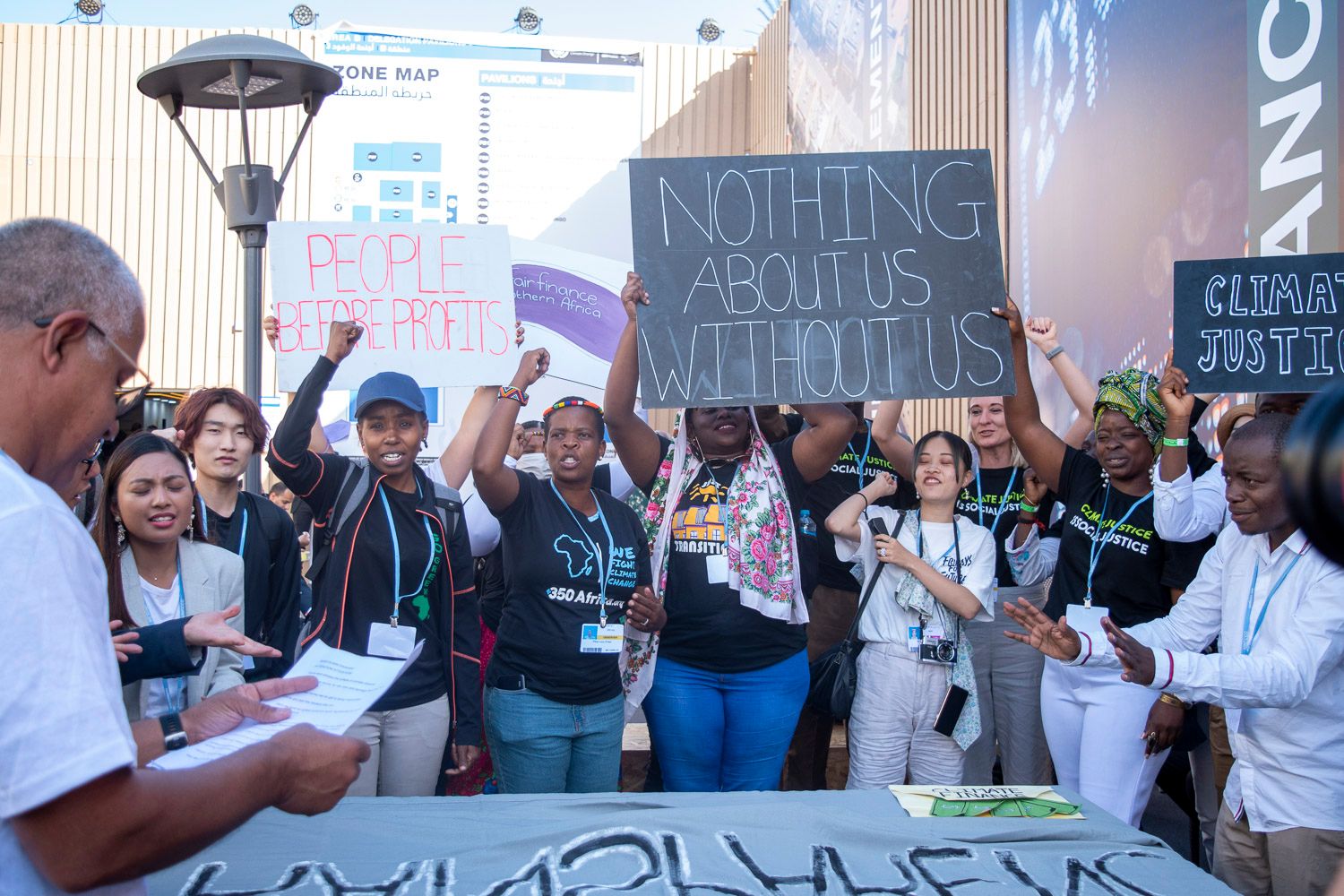Here’s how climate change will likely impact food security and public health
Climate change impacts natural disasters which in turn impact agriculture, food security and the spread of disease.

This story is part of a grant-funded program at Project Optimist that involved basic journalism training for student and community reporters in central Minnesota. A group of 20 environmental studies students received the training, did field reporting at the U.N. Climate Change Conference and filed stories that highlight their research. Kate Fenske is a senior at the College of St. Benedict and St. John’s University (originally from Shoreview, Minn.) with a major in integrative science with a focus in public health and a minor in political science. She’s also managing editor at the school’s newspaper, The Record.
Public health is starting to gain traction among international stakeholders in the conversation about climate change. Agriculture, food security, disease and natural disasters all tie into health and are increasingly impacted by climate change, yet have been largely ignored until recent years.
The Amazon region of South America serves as a good case study of how public health is impacted through climate change. It illustrates how these health impacts become increasingly noticeable, and how inevitably, they become increasingly noticeable elsewhere too, including in the United States.
Already, Amazonian countries have seen shifts in vector-borne diseases such as dengue fever and malaria as temperatures rise and precipitation and humidity patterns change. These are diseases transmitted to humans through another organism – mosquitos are the most known example, but diseases like Lyme disease passed through ticks and typhus passed through fleas also fall into this category.
“When there is stagnant water and excessive floods, it causes different diseases and mosquito-led diseases like malaria and water-borne diseases to spread. These have a huge impact, but the most important aspect is that the remoteness [of some populations]. … The infrastructure needed has to modernize. And we are more and more concerned about the health and wellbeing of these families,” said Jaidev (Jai) Shroff, CEO of UPL Limited, a global biosolutions company working on the intersection of food security, public health and the environment.
While most vector-borne diseases are not spreading far enough north to reach Americans yet, countries in Central America and regions in Mexico have experienced recent increases in mosquito-borne disease. They’re spreading as mosquitos are able to survive at higher latitudes because of the newfound temperate climate conditions in different locations.
Chronic diseases such as cardiovascular disease (CVD) have also been associated with higher temperatures in many regions near the equator. This is bad news for the U.S. as climate change progresses, because CVD is already the leading cause of death here.

What more natural disasters mean for public health
The number of billion-dollar disasters in the U.S. has been skyrocketing over the past 40 years, with 10 or more separate billion-dollar disasters every year for the past seven years. The U.S. is not alone in this statistic either – nearly every country in the world has seen an increase in natural disasters. And the public health impacts can be staggering.
In a 2005 drought in Brazil, hospitalizations rose by 54%. During the recent Hurricane Irma that hit Florida's coast, there were dozens of major infections due to contaminated water sources after public works infrastructure was knocked out. In Buffalo, New York, a recent blizzard left up to 50 inches of snow and resulted in nearly 40 deaths. The list can go on and on, both here in the U.S and globally.
Food security and nutritional health
Perhaps the largest global public health concern that could affect everyone is food insecurity. It’s defined by the United Nations Committee on World Food Security as “all people, at all times, have physical, social and economic access to sufficient, safe and nutritious food that meets their food preferences and dietary needs for an active and healthy life.”
Brazil is a top-five global producer of 34 agricultural commodities. It leads the world in soybean production, and those yields are predicted to drop 28-51% by 2040, depending on emission scenarios. Other crops such as coffee, citrus fruits, sugarcane and beans are expected to be impacted, reducing global food supply and undoubtedly increasing global food prices. This will increase the risk of food insecurity for low-income and rural populations.
“Food security [for all people] depends on the ability of farmers to keep on producing healthy, nutritious and fresh foods even during emergency conditions,” said Valaria Di Marzo, communications practice leader of the World Farmers Organization. Since agricultural yields are declining, so are incomes for agricultural and other rural workers, promoting food insecurity in the populations that, ironically, are often most directly connected to the food supply, she said.
Nutrient density in crops is yet another expected impact of climate change. Elevated carbon dioxide concentrations can decrease protein concentrations in barley, wheat, rice and potatoes by 10-15% and other minerals such as phosphorus, potassium, calcium, zinc and iron by 3-11%, depending on the crop and where it is grown.
Already, the food we eat does not go nearly as far nutritionally, and this problem is expected to only get worse. This would exacerbate the problem for the 2 billion people who are already food insecure and add more populations to that group.

Loss and damage spending for health?
COP27 was successful in setting up a climate finance fund for loss and damage. Although the specifics on how this process will work and how money will be distributed remains to be determined, public health impacts are an issue that will likely be considered as the distribution of funding for climate adaptation and mitigation allocated. It’s not clear yet whether a significant portion of the funding will go towards public health measures.
Prior to the 2022 Conference of the Parties (COP27) in Sharm El-Sheikh, Egypt, the inaugural meeting of the Alliance for Transformative Action on Climate and Health took place. At COP27, the first ever Food Systems Pavillion was established, and it was the first time “agriculture” was included as a thematic day. World Health Organization panels at the conference acknowledged how public health’s place at the proverbial climate negotiations table was young and working to be acknowledged, not nonetheless, of utmost importance.
“We have to reference our resources to respond to climate extremes, but simultaneously, we have to invest in resilience and focus on stabilizing humanitarian needs,” said Ute Klamert, deputy executive director of partnerships and advocacy at the UN World Food Programme, in support of funding public health measures.
For now countries remain largely on their own to invest in public health infrastructure and to protect their own populations from climate change.
This story was originally published in the Project Optimist newsletter on Feb. 1, 2023.

